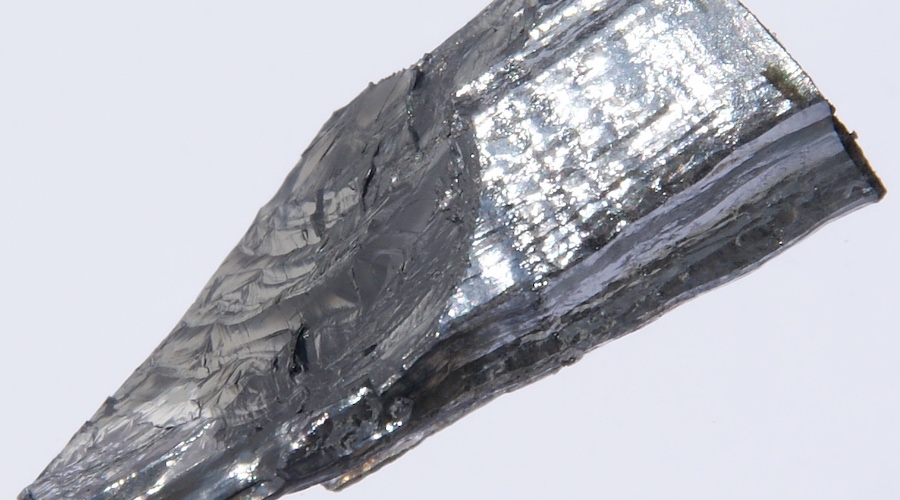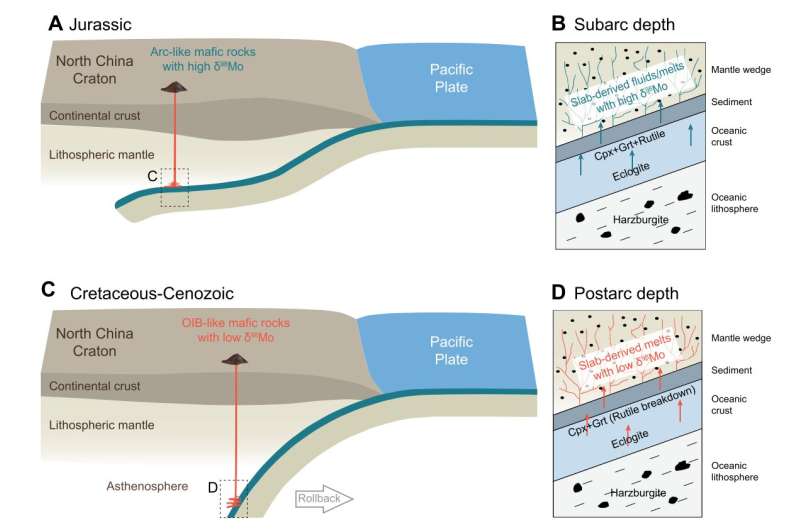How molybdenum is helping reveal secrets of the deep earth

Using molybdenum isotopes, a research team at the University of Science and Technology of China (USTC) discovered that the mantle sources of Cenozoic and Mesozoic mafic igneous rocks from the eastern North China craton had gone through different types of metasomatism at different depths.
In a paper published in the journal Geology, the scientists explain that subducting slabs precipitate fluids with different compositions and properties at different depths, and when interacting with mantle wedge rocks, metasomatism occurs near the interface.
Metasomatism refers to the process whereby a preexisting igneous, sedimentary, or metamorphic rock undergoes compositional and mineralogical transformations associated with chemical reactions triggered by fluids. When changing the chemical composition of mantle wedge rocks, such metasomatism produces different types of magmatism.

The process is an important one because by determining the composition of magmatic rocks, researchers can study the interaction of mantles at different depths, therefore revealing the structure of the subduction zone.
When analyzing the composition of molybdenum isotopes in the Mesozoic-Cenozoic mafic igneous rock in the eastern North China craton, the USTC scientists noticed a systematic difference, indicating disparities in molybdenum isotopes composition in the fluids derived in the subducting oceanic slabs at subarc and postarc depths.
The team also discovered that Mesozoic mafic igneous rocks have island-arc basalt-like features and a heavier molybdenum isotopes composition than regular mantles, indicating that they came from subducting oceanic slab-derived fluids at subarc depths in a small mantle wedge. In contrast, Cenozoic mafic igneous rocks show ocean-island basalt-like features and have lighter molybdenum isotopes than regular mantles, coming from dehydrated slab-derived melts at postarc depths in a large mantle wedge.
The researchers concluded that molybdenum in subducting slabs was mainly hosted in mineral rutile, which was stable at subarc depths but broke down at postarc depth. Moreover, by combining the research on Sr-Nd isotopes with that on Mo isotopes, the group further verified that the mantle source of Mesozoic and Cenozoic mafic igneous rocks had gone through different types of metasomatism at different depths.
In their view, this work provides an effective method to study the interaction of mantles at different depths, which can help the understanding of subduction zone structure in the future.
{{ commodity.name }}
{{ post.title }}
{{ post.date }}


Comments